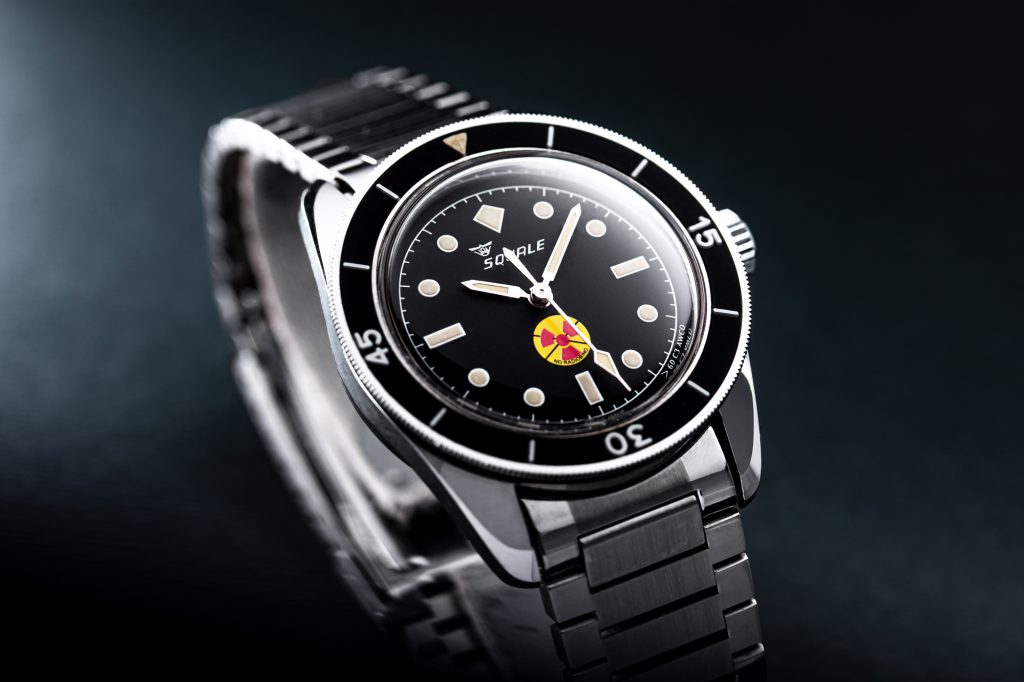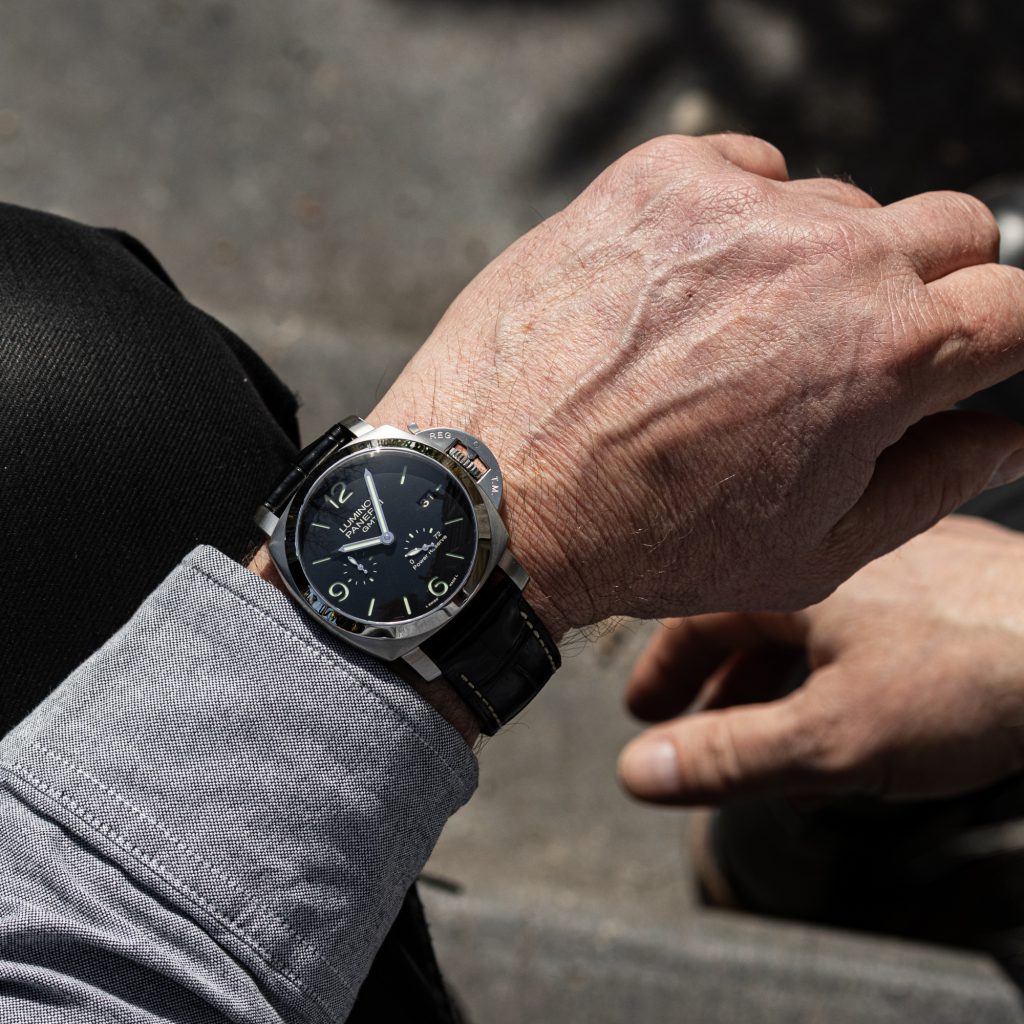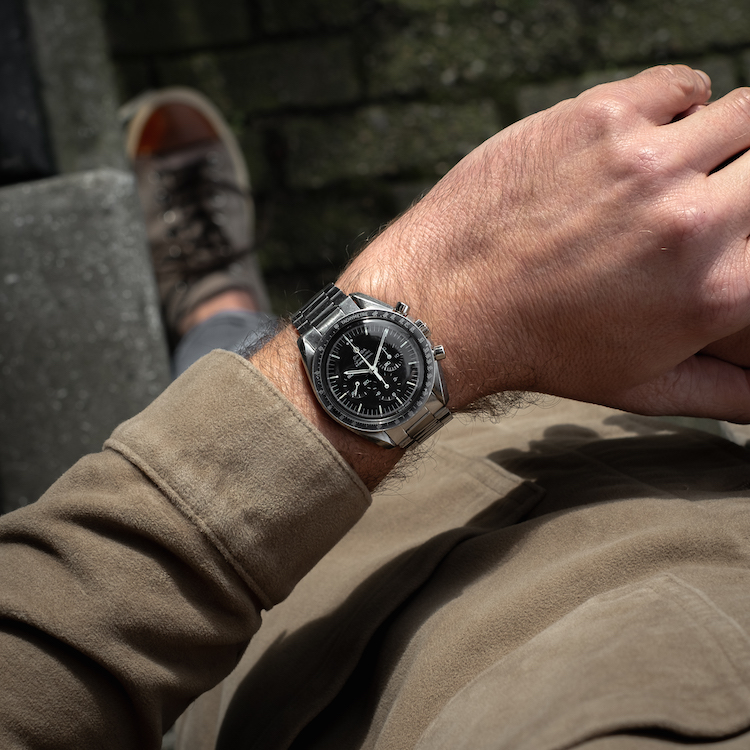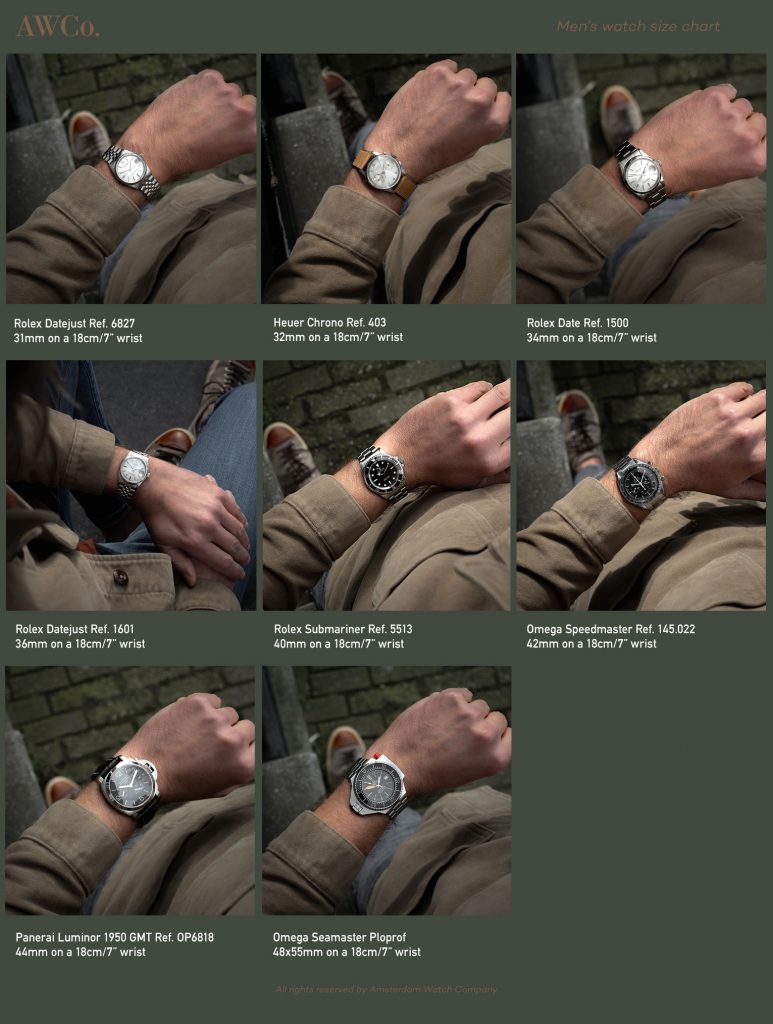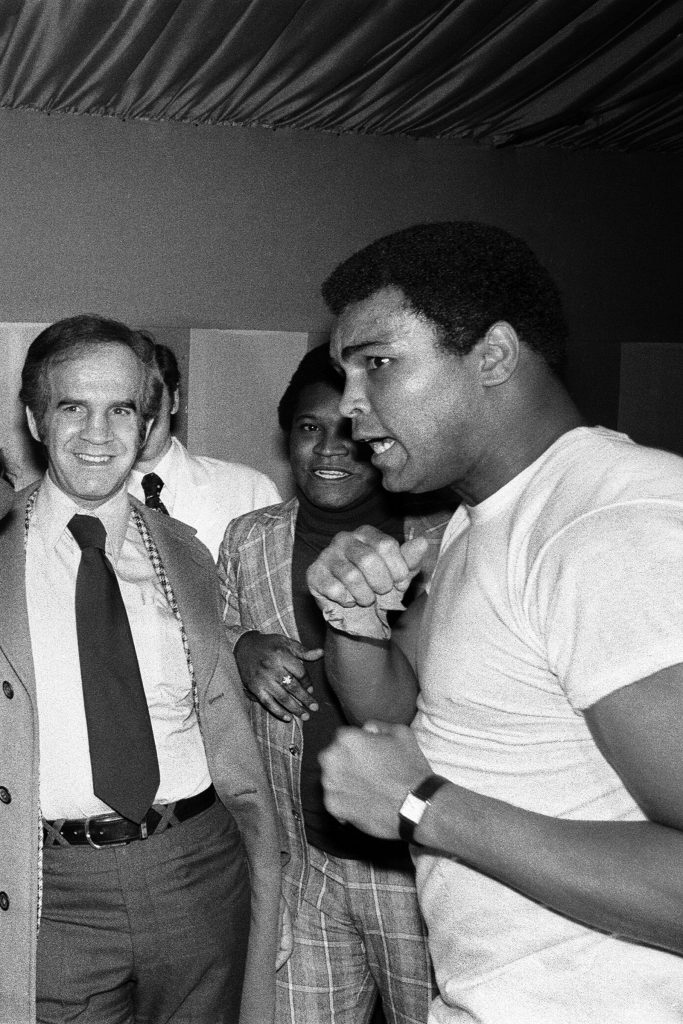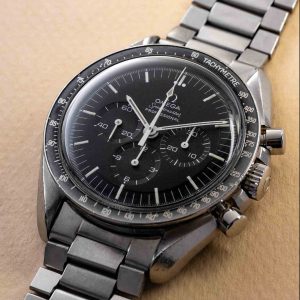Finding the perfect watch size: the expert’s watch size guide
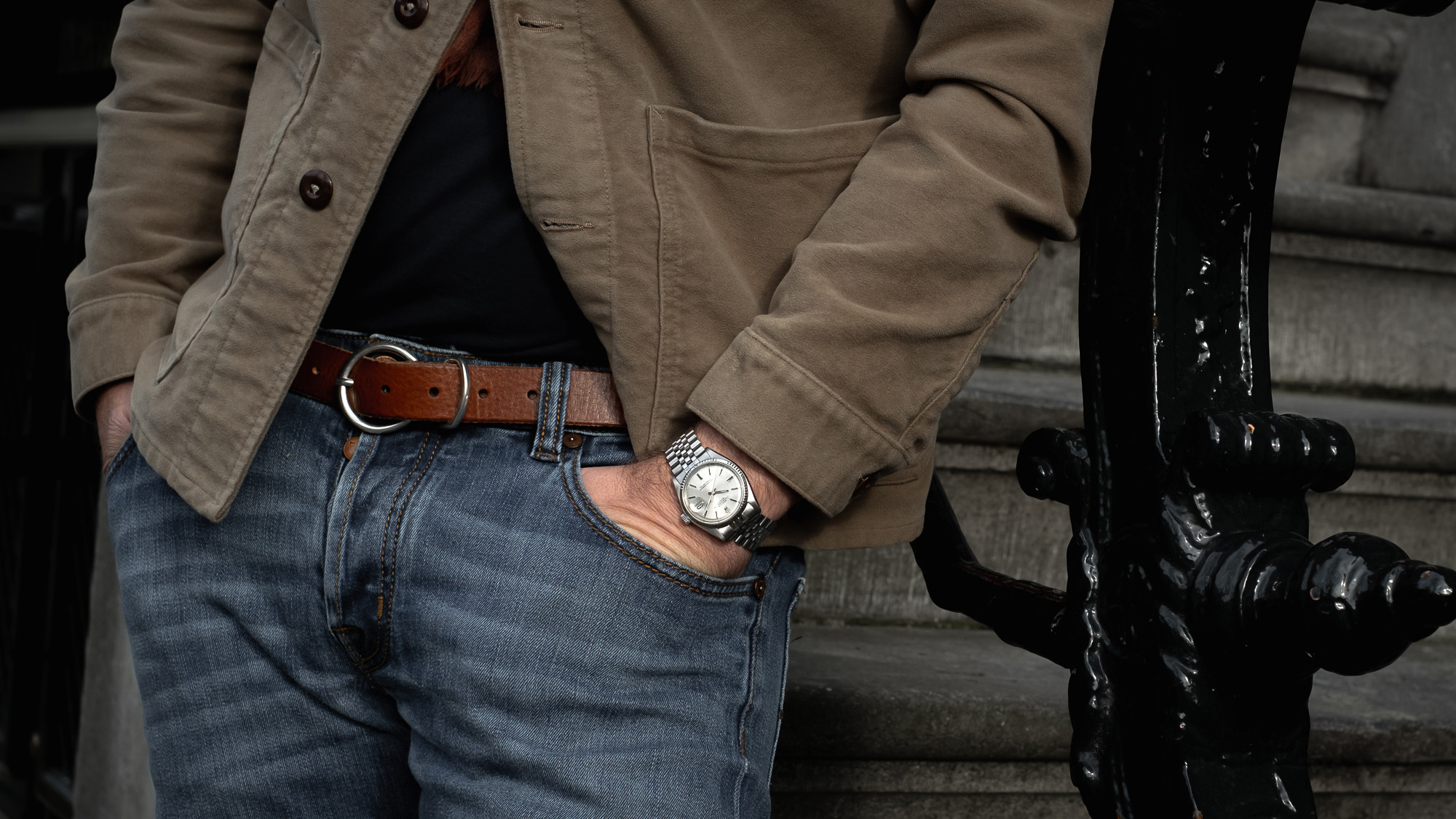
The internet is full of watch size guides and even more heated debates about watch sizes. Today, our aim is to try and shed a light on the age-old question: how do you find the right watch for your wrist? Yes, it is a bit ambitious, but here is our idea of the complete expert’s watch size guide! Watch size chart pictures included!
By Thomas van Straaten on March 24, 2021
When we recently launched our Squale Subino and No Radiobino in 34,8 mm NOS Blancpain cases, we immediately saw an old discussion heating up on social media and watch forums. The discussion of what is a good size for a watch. Proponents lauded us for launching a smaller dive watch. Others lamented “if only it were a 42”.
Why so serious?
One thing we have noticed is that watch sizes seem to be taken very seriously. The online watch community can get rather prickly and defensive about sizes. Just scroll through the comments of any watch release on social media and you will undoubtedly find rather passionate comments on why this new watch is either too big or too small. You will likely find both, by the way.
Interestingly, it is particularly male aficionados who get really fanatical about watch sizes. It seems the question gets linked to all sorts of notions about masculinity, which is really quite ridiculous and only points towards personal insecurities.
It would not really matter all that much if we all kept those struggles to ourselves. But unfortunately, our insecurities have a tendency to turn into aggressive online debates which are really not what our shared passion should be about.
So let’s not get bogged down in that discussion but let’s look at some more objective elements that determine a watch’s size. The extended watch size guide, so to speak.
"The online watch community can get rather prickly and defensive about sizes."
Forget the diameter
Most watch spec sheets show the diameter of a watch. It is the standard way to describe a watch’s size. We do it too, because it is simply what everyone is looking for. On its own though, it does not tell you all that much about how a watch will fit. Any watch size chart solely focussed on diameter is therefore rather useless. Let’s explore a couple more factors to take into account.
Lug to lug length
Not to be mistaken for lug width (which tells you which strap size to pick), lug to lug length is relevant because it determines how much of your wrist is actually covered by the watch. If you pick a watch with a lug to lug that is greater than the width of your wrist, the watch will stick out and look clumsy and oversized.
Some watches have a huge diameter, but practically no lugs. This means the lug to lug is pretty much identical to the diameter. Think, for instance, of the Panerai Radiomir or cushion-case divers such as the Doxa Sub300 or Seiko Turtle. Even though their diameters can reach up to 45 mm, most people can pull them off perfectly fine, simply because they do not overhang the wrist. At the same time, a 38 mm watch with long lugs can look too big on that very same wrist.
The popular Omega Speedmaster is a prime example. Many potentially interested aficionados baulk at the 42 mm diameter. Yet, its lugs are so short that they look amazing even on small wrists. Therefore it always makes sense to check what kind of case shape is used in a watch size chart.
Curvature
Still, the lug to lug length is not the end-all-be-all of watch sizing. The overall curvature makes a world of difference. The degree to which the watch follows the profile of the wrist, affects how it fits. A flat watch will always wear larger than a curved watch of the same lug to lug length. This is what is often described as the degree to which a watch hugs the wrist.
A 32 mm watch with lugs sticking out straight might visually wear larger than a 35 mm watch with downward curving lugs. Something that is not typically compensated for in watch size charts.
Thickness
While thickness might not affect a watch’s claim on wrist real estate, it sure does affect the visual presence of a watch. A small but thick watch can look more clumsy than a larger, thinner example. Even a watch with a subtle diameter and short lugs can look way too big on the wrist, simply because of its thickness. It is a problem many automatic chronographs suffer from, due to their thick movements.
Dial diameter
A 40 mm dress watch that is all dial will wear much, much larger than a 40 mm diver that features a 5 mm wide bezel around its smaller dial. When the surface of a watch is broken up into different elements, it shrinks visually. This is not typically reflected in a watch size chart.
Bracelet/strap and end links
You can play with the visual presence of your watch through different straps and bracelets. Some watches will appear larger on a strap than on a bracelet. Some are the other way around. A thicker strap or a different color can change the apparent size of your watch. Even the tapering of the strap matters. A 20 mm wide strap with no taper can make a watch look bigger than one that tapers to a 16 mm buckle.
Bracelets usually feature end links, which greatly affect the optical size of a watch. Some have short end links, which means the bracelet can articulate downwards pretty much at the lug to lug length of the watch. Other end links form additional lengths beyond the lug to lug. The previous generation of Omega Speedmaster Professional is a great example. Its end links flared out far beyond the watch case, making the whole thing wearing a lot bigger. Luckily, Omega fixed this in the latest edition. It is one of the reasons aficionados love vintage Speedmaster bracelets, as they have way shorter end links and better articulation, making them more suited to smaller wrists.
Color
Last but not least, the color of a watch affects its perceived size. Generally speaking, light dial colors make a watch appear larger than dark tones. Another element often overlooked in a watch size chart.
So what is the right watch size for you?
There are a few practical guidelines you can follow to ensure your watch has a nice fit. These are the most important:
No wider than your wrist
A general rule is to make sure the lug to lug length of your watch does not exceed the width of your wrist. This is something you can check by simply trying the watch on, or by measuring the width of your wrist with calipers. It is generally smart to stick to lug to lug lengths a couple of millimeters smaller than the width of your wrist. If your wrist is 50 mm wide, lug to lug lengths up to 46 mm will generally fit nicely. Still, you will have to take into account the other elements described above.
Of course you can intentionally break this “rule”. Every now and then you see the trend of the boyfriend-watch style among women coming back. A watch that is intentionally oversized for visual effect. In the early 2000s, there was a big trend towards massive watches. Brands like Panerai and U-Boat and fashion watches like TW Steel and Diesel were dominant in fashion. Since then, the trend has leaned more towards smaller watches.
Different purposes, different sizes
The type of watch is also highly relevant. There is a sense of etiquette here. Dress watches are supposed to wear smaller than divers or pilot’s watches. The latter are designed for rough use and legibility under tough circumstances. The former is intended to be elegant and classy. So any watch size guide would not be complete without specifying the type of watch.
An open mind is a mind ready for watch collecting bliss
While guidelines can be very handy as a starting point, the real problem we are spotting is when people become dogmatic about it. It seems almost as if you have to pick sides here. People tend to get deeply invested in seeing themselves as a “big watch guy or gal” or a “smaller is better purist”. Even worse is when people get overly vocal about it (usually online) and start ruining the experience for others.
The reality is that these ideas put a major brake on the potential joy you can get from our shared passion. It is so much fun to just be open minded and try on different things. It is actually one of the many fun aspects of working at AWCo. Oftentimes people come in with very clear demands and boundaries of what they want. By intentionally throwing in some dark horses when showing the options, those boundaries are usually quickly dissolved.
It is our experience that unfamiliar watch sizes take a little getting used to. When I personally switch from my Squale Subino to my Seiko Marine Master 200, the full centimeter difference in diameter takes about ten minutes to adjust to. Both are steel, black-dialed dive watches, but due to the size difference, they are completely different animals. And you know what, I love them both! They wear entirely differently and exude a very different style. They make me feel different in their own unique ways. They have something else to say. Variety is the spice of life, isn’t it?
Let’s face it: If style icon Gianni Agnelli can rock a 55 mm wide Omega Ploprof and boxing legend Muhammad Ali looks awesome with his 24 mm wide Cartier Tank, you can rest assured that whatever you do in the middle of that is probably okay!
So there you have it. A comprehensive watch size guide that concludes that it pays to try it all. No need to consider yourself a big or small watch partisan. Isn’t that great? One thing less to worry about!

